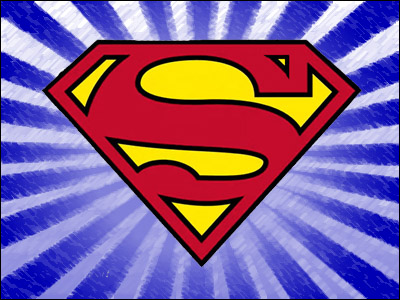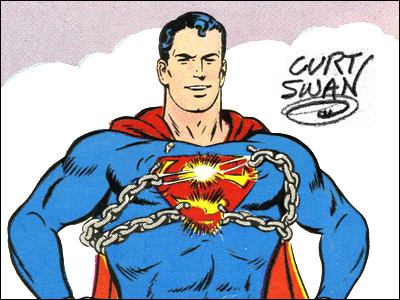I was probably seven or eight when I first discovered Superman. I loved him from the start because…well, because he was Superman. How, at least in those days, could you not love Superman? In later years, various folks who had creative custody of him complicated his basic premise with elements and plots that were supposed to make him more contemporary. Some attempted to make him more relevant to some odd interpretation of the real world at that particular moment. I understood from the get-go that the whole point of Superman was that he didn't exist in anything resembling a real world.
I think I first saw Superman in the George Reeves TV show which ran at least once a day on Los Angeles TV and then I think I saw the Superman cartoons — the one the Fleischer Studio made in 1941-1943. Engineer Bill ran them from a time on his kids' show on Channel 9. But I might have seen the cartoons before the live-action show. I'm only sure the Superman comic books came third. Between what came out each month on the newsstands and what I could scoop up in second-hand bookstores — five cents each, six for a quarter — I soon had a lot of them. A lot.

Everyone who loves Superman has their favorite version of the character and it's usually the first version they saw. Mine was kind of an amalgam. I loved a Superman that existed in my imagination: If the George Reeves show had been able to do the super-feats (and more convincing flying) of the Fleischer cartoons. The comic books, I thought, were all over the place with some stories that, even in my single-digit years, I thought didn't do right by him.
There's a quote that I heard years later attributed to Mort Weisinger, the editor of those comics and the most powerful force in the Superman industry until about 1970. He allegedly said at some time in some context, "Superman is invulnerable. Even bad scripts can't hurt him!" I dunno if he really actually said that but he should have. He certainly at times seemed to be testing out that premise.

Fortunately for The Man of Steel, certain elements of his mythology were constant even if there were occasional deviations. And fortunately, there were some good artists who could make him look like Superman even when he wasn't being written like Superman. For folks in my age bracket, the two main artists were Curt Swan and Wayne Boring, and I have seen grown men arguing as to which of them got Superman "righter."
When asked to cast my vote in this debate, I usually say, "In terms of drawing the character right on covers and in pin-up type poses, Curt Swan was easily the best…but most of my favorite stories were illustrated by Wayne Boring." Once in a while, I even go off the board and pick Superman's artistic creator, Joe Shuster or the artists at the Fleischer Studios who did such a fine job aping his style.

Having made a few enemies in the previous paragraph, I would like to say that I've loved a lot of different interpretations of that guy from Krypton and that while I don't follow the current comics as closely as I once did, I sometimes see a real good Superman in one of them. They are, however, all drawn by transients. Boring worked on the character from about 1942 to 1967 (with a guest appearance or two later on). Swan first drew a Superman story in 1948 and last drew part of one in 1996.
I doubt anyone in the future will ever be "THE Superman artist" for one decade, let alone several. And most kids today, if they have an idea of who Superman is probably got it from the movies or recent animated adventures, not the comics.
I remember the first time I read something in a Superman comic book that struck me as really ridiculous. I don't remember which issue it was because they did this a few times and each time, I felt my intelligence was being insulted. I was probably eight or nine and didn't have that much that was insultable but insulted I was. I'll tell you about it in the second part of this blog post tomorrow.